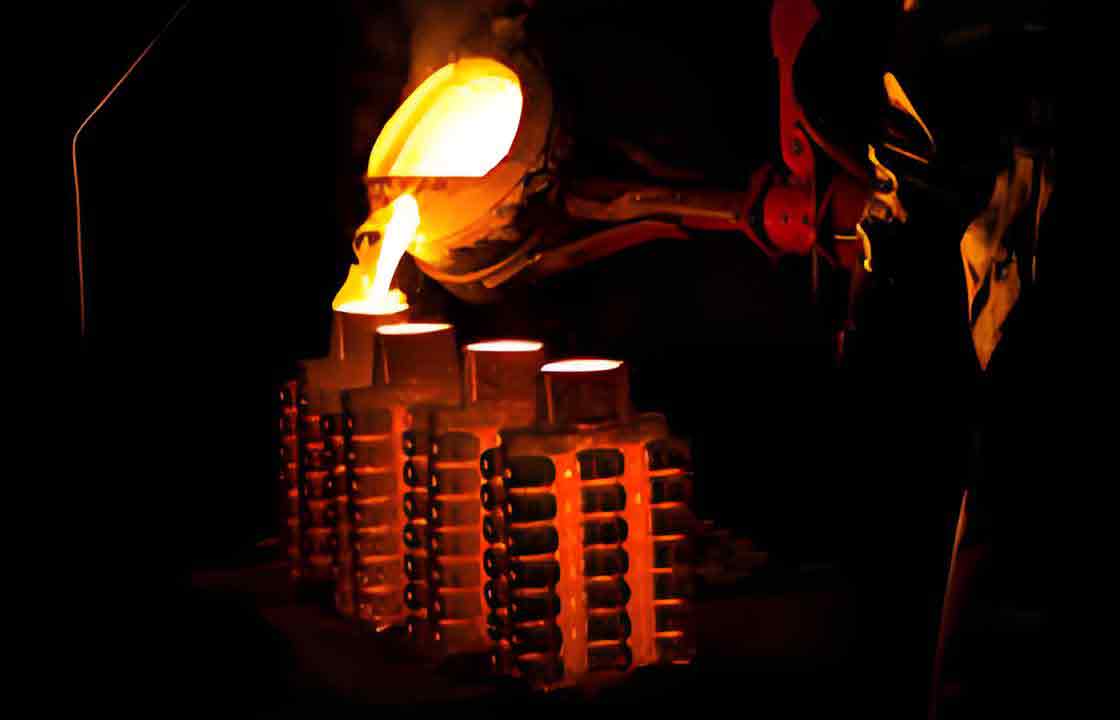
Introduction
Investment casting is manufacturing process that has been used for centuries to produce complex and precise components. As the demand for high-quality and intricate parts grows, the investment casting industry is increasingly turning to automation and digitalization to enhance efficiency, accuracy, and overall productivity. This article explores the latest trends in automation and digitalization within the investment casting process, highlighting their benefits, applications, and future prospects.
Overview of Investment Casting
Traditional Investment Casting Process
- Pattern Creation: Wax patterns are created using injection molding.
- Assembly: Wax patterns are assembled onto a central wax gating system.
- Shell Building: The assembly is dipped into a ceramic slurry to build a shell around the wax patterns.
- Wax Removal: The wax is melted and removed, leaving a cavity in the ceramic shell.
- Metal Pouring: Molten metal is poured into the ceramic mold.
- Cooling and Shell Removal: The metal solidifies, and the ceramic shell is broken away to reveal the cast component.
- Finishing: The casting is cleaned, and any additional finishing processes are applied.
Automation in Investment Casting
Robotics and Automated Systems
- Pattern Creation and Assembly: Automated injection molding and robotic assembly of wax patterns improve precision and reduce labor costs.
- Shell Building: Automated dipping and coating systems ensure consistent shell thickness and quality.
- Metal Pouring: Robotic systems provide precise control over metal pouring, reducing defects and improving yield.
Advantages of Automation
- Consistency and Precision: Automated systems deliver consistent quality and precision, reducing variability and defects.
- Increased Productivity: Automation speeds up the production process, enabling higher throughput.
- Labor Cost Reduction: Automation reduces the need for manual labor, lowering production costs.
- Enhanced Safety: Robotic systems can handle hazardous tasks, improving workplace safety.
Applications of Automation
- High-Volume Production: Automotive and aerospace industries benefit from the high throughput and consistency of automated investment casting.
- Complex Geometries: Automation allows for the precise creation of intricate and complex components.
Case Study: Robotic Shell Building
Implementation: A leading aerospace manufacturer implemented robotic shell building for turbine blade production. Results:
- Increased Precision: Achieved consistent shell thickness, reducing defects by 20%.
- Productivity: Increased production speed by 30%.
- Cost Savings: Reduced labor costs by 25%.
Digitalization in Investment Casting
Digital Twins and Simulation
- Process Optimization: Digital twins and simulations allow for the virtual testing and optimization of casting processes.
- Defect Prediction: Advanced modeling techniques predict potential defects and optimize process parameters to minimize them.
- Real-Time Monitoring: Digital twins provide real-time data on the casting process, enabling immediate adjustments and quality control.
Benefits of Digitalization
- Enhanced Quality Control: Real-time monitoring and simulations improve quality control, reducing defects and rework.
- Process Optimization: Digital tools optimize process parameters, enhancing efficiency and yield.
- Data-Driven Decisions: Digitalization provides valuable data for informed decision-making and continuous improvement.
Applications of Digitalization
- Complex Components: Digital twins and simulations are particularly useful for optimizing the production of complex aerospace and automotive parts.
- Quality Assurance: Real-time monitoring systems ensure consistent quality and adherence to specifications.
Case Study: Digital Twin Implementation
Implementation: An automotive manufacturer adopted digital twin technology for engine component casting. Results:
- Defect Reduction: Reduced casting defects by 15% through process optimization.
- Efficiency: Improved production efficiency by 20% through real-time monitoring and adjustments.
- Cost Savings: Achieved significant cost savings by minimizing rework and scrap.
Comparative Analysis of Traditional and Automated Investment Casting
| Aspect | Traditional Investment Casting | Automated Investment Casting |
|---|---|---|
| Pattern Creation | Manual wax injection molding | Automated injection molding and 3D printing |
| Assembly | Manual assembly of wax patterns | Robotic assembly |
| Shell Building | Manual dipping and coating | Automated dipping and coating |
| Metal Pouring | Manual metal pouring | Robotic metal pouring |
| Quality Control | Manual inspection | Real-time monitoring and digital twins |
| Productivity | Moderate | High |
| Labor Costs | High | Reduced |
| Consistency and Precision | Variable | High |
Future Trends in Automation and Digitalization
Artificial Intelligence and Machine Learning
- Predictive Maintenance: AI-driven predictive maintenance ensures minimal downtime and optimized machine performance.
- Process Optimization: Machine learning algorithms analyze data to continuously optimize casting parameters for improved yield and quality.
Internet of Things (IoT)
- Connected Systems: IoT-enabled devices provide real-time data and connectivity, enhancing process control and monitoring.
- Smart Factories: Integration of IoT with automation and digitalization leads to smart factories with improved efficiency and reduced waste.
Additive Manufacturing Integration
- Hybrid Processes: Combining additive manufacturing with investment casting for creating complex and high-precision components.
- Rapid Prototyping: 3D printing of patterns enables rapid prototyping and iteration, reducing development time and costs.
Sustainable Practices
- Energy Efficiency: Automation and digitalization optimize energy usage, reducing the environmental footprint of the casting process.
- Waste Reduction: Improved process control and optimization minimize waste, contributing to sustainability goals.
Conclusion
The investment casting industry is undergoing significant transformation through automation and digitalization. These advancements are enhancing the precision, efficiency, and overall quality of the casting process, making it possible to meet the stringent requirements of modern manufacturing. The integration of robotics, digital twins, AI, and IoT is paving the way for smart factories and sustainable practices, ensuring the continued evolution and competitiveness of the investment casting industry. As these trends continue to develop, manufacturers will be able to produce even more complex and high-performance components, driving innovation across various sectors, particularly in aerospace and automotive industries.
